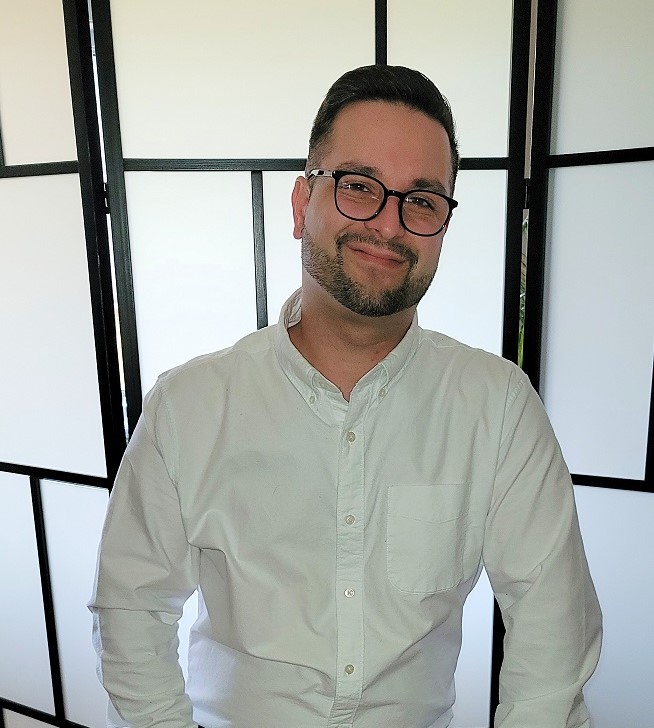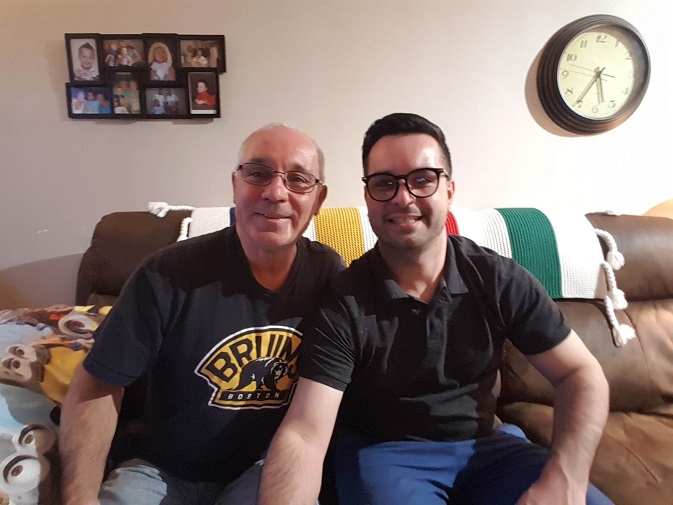Showing Actual Proof in My Life
By Ryan Nother
District Men’s Leader
Sunshine District, Winnipeg

I have been practising Nichiren Buddhism with SGI Canada since 2018 in Winnipeg. Not many people know this—it was in 2016 that I really hit rock bottom. I was in a repeating pattern of misfortune and suffering. It was a true culmination of the first chapter of my life, and I had isolated myself from almost everyone. My family was living far away in Southern Ontario, and I had no meaningful friendships in Winnipeg and no lovers. In addition, I was battling my exes for visitation with my children. Because of the isolation, my suffering had grown stronger than I could manage. For the better part of a year, I was in the life state of Hell.[1] I tried to heal with therapy and wellness tools, seeking answers like never before, using one self help book or video after another.
One day, I was in a really dark place, suffering emotionally and mentally. I thought that this must be what people feel like when they become suicidal, and yet…I felt the opposite. I felt an appreciation for the experience. I just knew that this struggle would, in the end, provide a gift somehow. As I pursued this train of thought, suddenly a question popped into my mind—what did the “Buddha” go through to become enlightened? I searched on YouTube for the story of the Buddha. I watched one video after another which described the journey of a prince Siddhartha who left his father’s palace to find the real answers to the meaning of life and to understand the four sufferings of birth, aging, sickness and death. He became known as Shakyamuni Buddha. Because of my own suffering, I felt so connected to him. It was as though I had stumbled onto enlightenment.
Coincidentally, while I was having this awakening all alone in Winnipeg, my mother’s boss and confidant, Kate, was on a retreat at the SGI Canada Centre in Caledon, Ontario. Mystically, she just happened to share a room with an SGI district leader from Winnipeg named Pat. Out of sincere concern for my situation, Kate talked to Pat about me and my struggles. When Kate returned from Caledon, she talked to my mother about Buddhism, even though my mother wasn’t practising. My mother understood, and soon I received an invitation to attend a Buddhist district meeting in Winnipeg. Looking back, I now realize that the organic timing of all of this was an example of the Mystic Law[2] of Nam-myoho-renge-kyo.[3]
When I attended my first SGI meeting, it was very awkward. I walked in and everyone was chanting. Someone gave me a gongyo[4] book, and I tried to follow along. That was the day that I chanted Nam-myoho-renge-kyo for the very first time. Then someone at the meeting read a passage from Nichiren Daishonin’s writing “Happiness in this World”:
Suffer what there is to suffer, enjoy what there is to enjoy. Regard both suffering and joy as facts of life, and continue chanting Nam-myoho-renge-kyo, no matter what happens. How could this be anything other than the boundless joy of the Law? Strengthen your power of faith more than ever. (WND-1, 681)
This sentiment stood out to me. I repeated it in my mind like a catchy song from the radio for days, weeks and months.
I think about the eternity of this practice, and about Nichiren[5], who first chanted Nam-myoho-renge-kyo in the 13th century, and how powerful chanting is. He has penetrated time and space to connect the daimoku[6] to me. It is the same with the three founding presidents[7] of the Soka Gakkai. By praying for kosen-rufu,[8] they have chanted for me, to me, and with me. Now I chant back to them, for them, and with them. Daimoku knows no such limits as time or space. When we chant, the ‘rules’ we have built up in our mind do not apply anymore. Daimoku supersedes all physical principles, and permeates the universe.
When I first began to chant, I was struggling to keep a one-bedroom apartment, and I had to receive financial help from my family. I was completely isolated. I was in the world of Hell in every way—mentally, emotionally and physically. But once I made the connection to this practice—to the Gohonzon,[9] and to my mentor Ikeda Sensei—it was as though my life transformed before my own eyes.
My new energy did not go unnoticed. I was selected for a promotion at work, and that helped me to become financially independent. I met the woman of my dreams, and we are now happily married. In addition, I turned the poisonous relationships with the mothers of my children into medicine by respecting their Buddha nature. I began to treat them as Buddhas. Now they are among my closest allies.
After not speaking to my father for a long time, I finally had the courage to confront him about the shame I was feeling about him. I used to always feel so ashamed, but once I started chanting, I overcame my fear, and I believed in myself because of the power of my daimoku. Through chanting and by making this brave reconnection, I am confident that I’m helping my family transform our karma.

Ryan (right) with his father, Brian.
From the first day of my practice I had one deep prayer in my heart, and I can now say that my prayer has been answered, and that the greatest victory of my life has manifested! My 7-year-old daughter is a part of my life for the first time! Her mother had refused contact but I never gave up, and I trusted in my daimoku. I welcomed my daughter into my life in January 2021, and we have been cherishing every moment together.
I believe that it is my mission to continue to show actual proof, and so to inspire others to transform their lives too, through human revolution. One by one, we will create exponentially deeper happiness for all living beings.
I wish to express my appreciation for the dedication of one woman, our late past chairperson Mrs. Elizabeth Izumi.[10] Because of her encouragement, I was able to practise this Buddhism, and as a result, I have become truly happy. The power of her life of tireless action for kosen-rufu will reach far into the eternal future through me, and through the SGI family.
Published in August 2021 New Century
[1] World of Hell: The lowest of the Ten Worlds. Viewed as a state of life, it is a condition of extreme suffering in which one is crushed by agony and unable to do anything about it.
[2] Mystic Law: The ultimate law, principle, or truth of life and the universe in Nichiren’s teachings; the Law of Nam-myoho-renge-kyo.
[3] Nam-myoho-renge-kyo: The fundamental Law of the universe expounded in Nichiren Buddhism, it expresses the true aspect of life. Chanting it allows people to directly tap their enlightened nature and is the primary practice of SGI members.
[4] Gongyo: Literally, to “exert [oneself in] practice.” Generally speaking, gongyo refers to the practice of reciting Buddhist sutras in front of an object of devotion. In Nichiren's teaching, gongyo means to chant the daimoku of Nam-myoho-renge-kyo and recite portions of the “Expedient Means” (second) chapter and the “Life Span” (sixteenth) chapter of the Lotus Sutra with faith in the object of devotion called the Gohonzon.
[5] Nichiren Daishonin: (1222-82) The founder of the Buddhism upon which the SGI bases its activities. Based on his enlightenment, he inscribed the true object of devotion, the Gohonzon, for observing one’s mind and established the invocation of Nam-myoho-renge-kyo as the universal practice for attaining enlightenment.
[6] Daimoku: Chanting Nam-myoho-renge-kyo in Nichiren Daishonin’s teachings.
[7] The first three founding presidents of the Soka Gakkai: Tsunesaburo Makiguchi, Josei Toda and Daisaku Ikeda—are known as the founding presidents and are the mentors of the organization.
[8] Kosen-rufu: refers to the process of establishing the humanistic ideals of Nichiren Buddhism in society.
[9] Gohonzon: The object of devotion in Nichiren Buddhism. It is the embodiment of the Law of Nam-myoho-renge-kyo, expressing the life-state of Buddhahood, which all people inherently possess. Go means “worthy of honour” and honzon means “object of fundamental respect.”
[10] Mrs. Elizabeth Akiko Izumi (1936-2021) was the first chairperson for SGI Canada. She met SGI President Daisaku Ikeda in October 1960 during this first visit to Canada. Although not a Soka Gakkai member at the time, she was encouraged by the warm guidance Daisaku Ikeda gave her. Nineteen months later, due to her health struggles, she started to practise Nichiren Buddhism and so began her journey to introduce Nichiren Buddhism to people in Canada.

